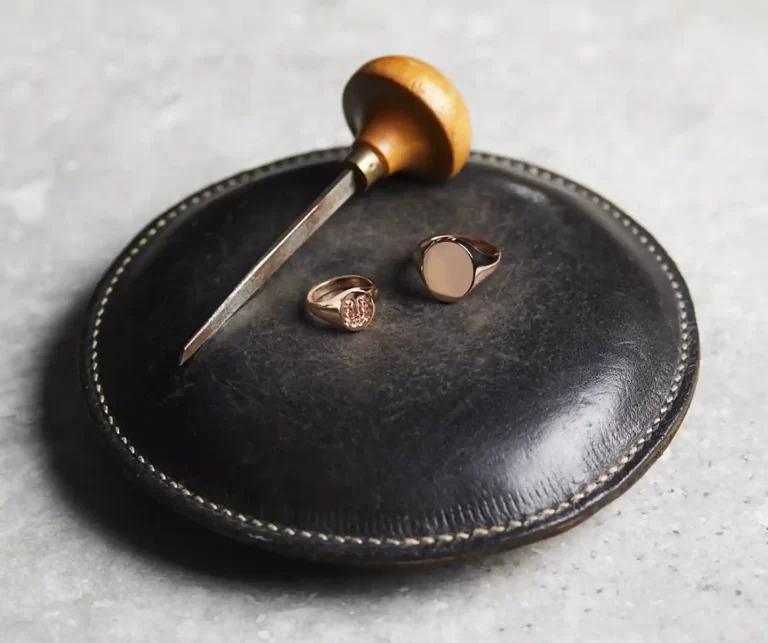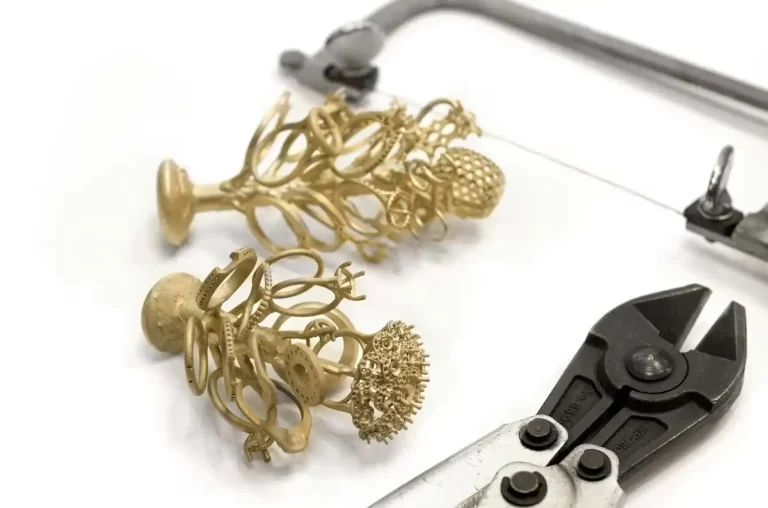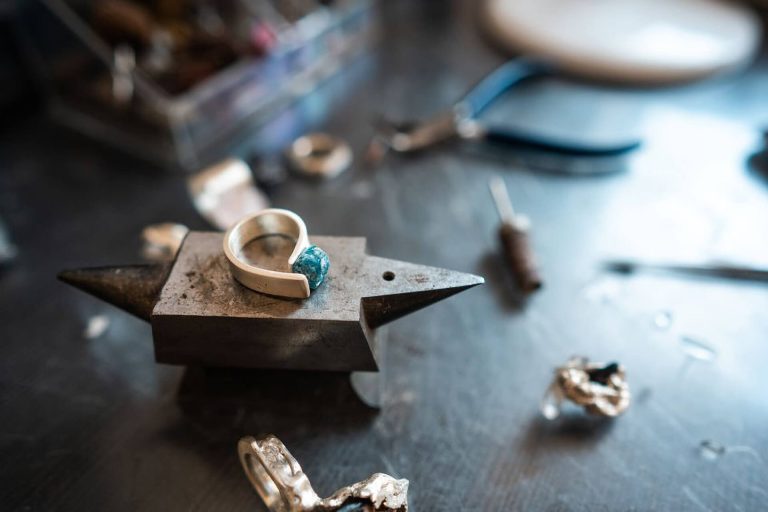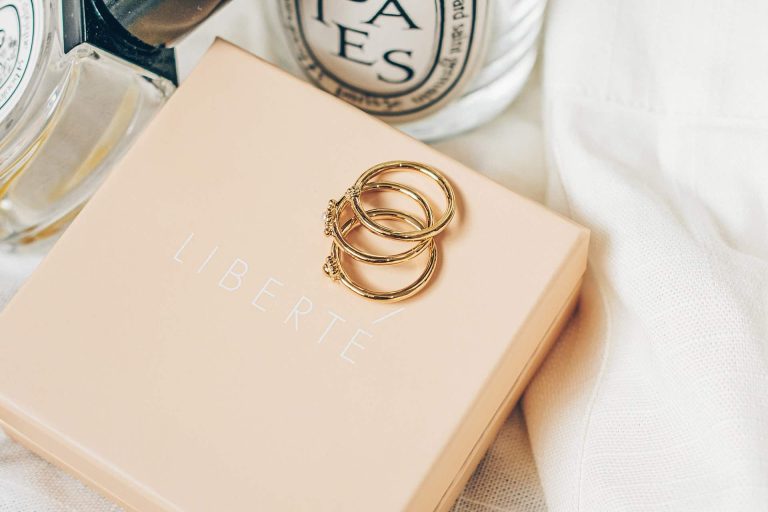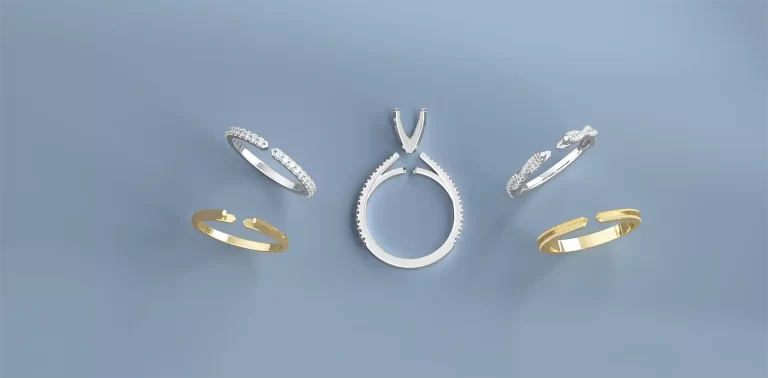The intricate anatomy of rings
Let’s delve into the intricate anatomy of rings and explore their components. Whether you’re a jewelry enthusiast, a bride-to-be, or simply curious, understanding these terms will enhance your appreciation for these beautiful adornments. Here are 12 essential parts of a ring:
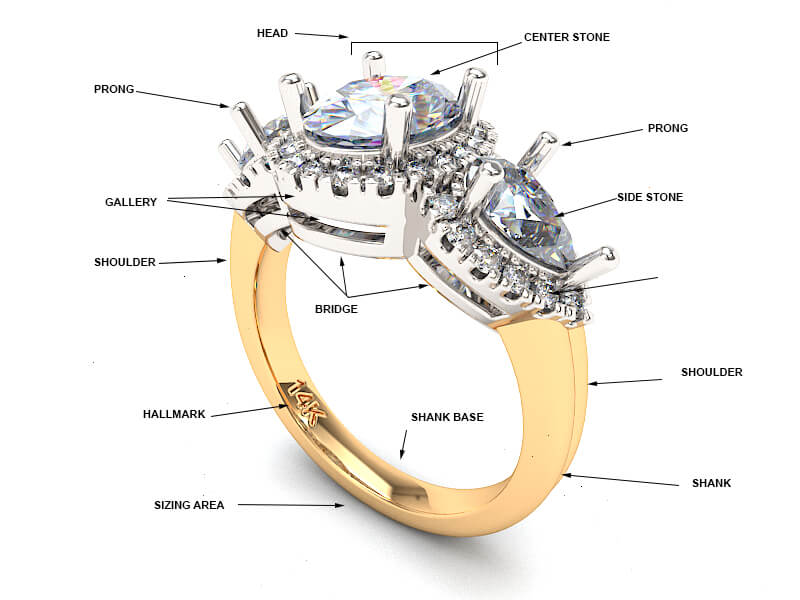
Shank: The shank, also known as the band or hoop, forms the circular base of the ring. It wraps around your finger and comes in various styles, from plain metal bands to elaborate designs. Euro shanks, with flat bottoms, prevent the ring from spinning and work well for large center stones.
Head: The head cradles the main gemstone or center stone. It’s the part that “hosts” the gemstone. The head is easily visible in rings with prominent center stones as the raised portion holding the gem.
Gallery: The gallery is the section visible from the side of the ring, beneath the center stone. It contributes to the ring’s profile beauty. Galleries can range from highly elaborate to minimalistic designs.
Shoulders: The sloping sides of the ring lead up to the center of the design. These shoulders hold the head of the ring and are often adorned with accent stones, enhancing the overall beauty.
Solder Points: Rings are often crafted in separate pieces and then joined. The positions where the metal pieces connect are called solder points. Complex designs involve separate head and shank pieces that are soldered together.
Airline: Found in settings where the head is elevated (like solitaire or cathedral settings), the airline is an open section. It adds to the ring’s overall beauty and isn’t present in low settings where the head sits closer to the shank.
Prongs: Prongs are tiny metal tips or beads that secure the gemstone or diamond in place. They are crucial in securing the stone and allowing light to enter for maximum brilliance.
Accent Stones: These smaller stones surround the center stone, adding sparkle and complementing the main gem. Halo settings, for instance, feature a band of accent stones encircling the center stone.
Side Stones: Side stones are additional gemstones set alongside the center stone. They enhance the overall design and can be diamonds, colored gemstones, or other precious stones.
Setting: The setting encompasses the entire ring, including all stones and components. It determines how the stones are secured and displayed.
Setting style
Each style has unique characteristics; understanding them will help you appreciate the diversity of ring designs. Here are some popular setting styles:
- Solitaire Setting:
- Description: The solitaire setting is timeless and elegant. It features a single center stone (usually a diamond) held securely by prongs or a bezel.
- Key Features:
- Minimalistic design with maximum focus on the center stone.
- Prongs allow light to enter the stone, enhancing its brilliance.
- A classic choice for engagement rings.
- Halo Setting:
- Description: The halo setting surrounds the center stone with a circle (or halo) of smaller accent stones.
- Key Features:
- Creates the illusion of a larger center stone.
- Adds sparkle and brilliance.
- Available in various shapes (round, cushion, pear, etc.).
- Pave Setting:
- Description: In a pave setting, small stones are closely set into the metal surface, creating a “paved” look.
- Key Features:
- Delicate and intricate appearance.
- Maximizes sparkle due to multiple tiny stones.
- It is commonly used for wedding bands and eternity rings.
- Channel Setting:
- Description: Channel-set stones are placed side by side within a channel (groove) in the band.
- Key Features:
- Sleek and continuous appearance.
- It is ideal for showcasing smaller diamonds or gemstones.
- Famous for anniversary bands.
- Bezel Setting:
- Description: The bezel setting encircles the center stone with a metal rim.
- Key Features:
- Provides excellent protection for the stone.
- Modern and secure design.
- Suitable for active lifestyles.
- Three-Stone Setting:
- Description: Three-stone rings feature a center stone flanked by two smaller stones.
- Key Features:
- Symbolizes the past, present, and future.
- Versatile design with various stone combinations.
- Often chosen for engagement rings.
- Cluster Setting:
- Description: Cluster settings group several smaller stones together to create the illusion of a larger gem.
- Key Features:
- Budget-friendly option.
- Intricate and eye-catching.
- Ideal for vintage-inspired designs.
- Tension Setting:
- Description: The tension setting suspends the center stone between two metal ends without visible prongs.
- Key Features:
- Modern and minimalist.
- It gives the illusion of the stone floating.
- Requires precise craftsmanship.
Remember that each setting style has its own charm, and personal preference plays a significant role in choosing the perfect ring. Whether you adore the simplicity of solitaires or the intricate details of pave settings, there’s a style for everyone! 💍



Creative approach to every project
- Nulla at volutpat diam
- Duis ut diam quam nulla
- Rhoncus aenean vel
At vero eos et accusamus et iusto odio dignissimos ducimus qui blanditiis praesentium voluptatum deleniti atque corrupti quos dolores et quas molestias excepturi sint occaecati cupiditate non provident, similique sunt in culpa qui officia deserunt mollitia animi, id est laborum et dolorum fuga. Et harum quidem rerum facilis est et expedita distinctio. Nam libero tempore, cum soluta nobis est eligendi optio cumque nihil impedit quo minus id quod maxime placeat facere possimus, omnis voluptas assumenda est, omnis dolor repellendus.



